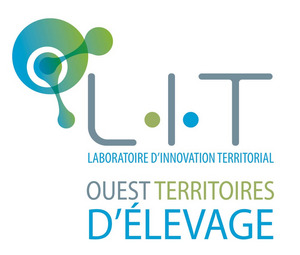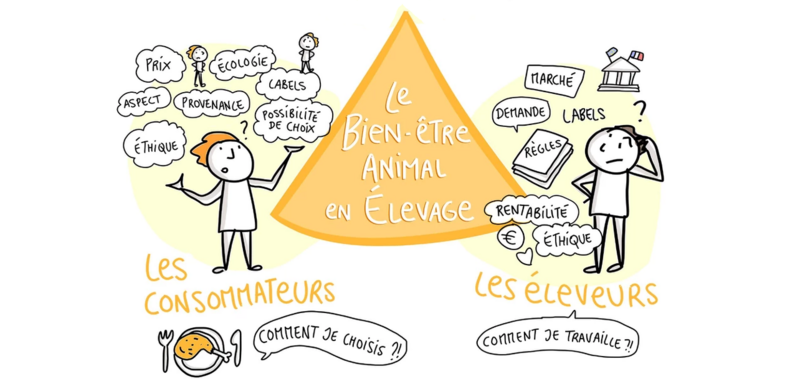LIT OUESTEREL - Laboratoire d’Innovation Territorial Ouest Territoires d’Elevage (Territorial Innovation Living Lab ‘Livestock Territories of Western France)
Living Lab

The Living Lab LIT OUESTEREL is localized in the Western part of France (Regions of Bretagne, Normandie, and Pays de la Loire) where livestock production is particularly important (i.e. around 75% of the French production of pigs is located in the region). It includes three intra-regional pilot territories. Its activities focus on poultry, pork and cattle production (dairy and meat) at several stages of the value chain (livestock production, transport and slaughtering). It focuses on animal welfare and health in the framework of the One Health / One Welfare concept.
Aim
The Living Lab LIT OUESTEREL aims at reconciling livestock and society by co-constructing projects focused on the improvement of animal welfare, the reduction in the use of veterinary products in livestock (notably antimicrobials), and the improvement of socio-economic conditions of different actors of the livestock chains, notably livestock producers.
Short Background information & funding structure
LIT OUESTEREL was one the 24 winners of a project call “Territoires d’Innovation” (Innovation Territories) launched by the French government in mid-2019.
The project started officially in January 2020 after more than three years of preparation and construction.
Living Lab implemented through an Association (“Association LIT OUESTEREL) created in January 2020:
- Around 40 partners at the creation;
- More than 60 partners today (end 2022);
The Living Lab is funded by the “Banque des Territoires”, and the three Regional Councils of Bretagne, Normandie, and the Pays de la Loire. Moreover, there is a membership fee for the Association.
Methods and tools
Methods and tools vary in function of the project considered. A common characteristic of the different projects is the co-design of each project by the different stakeholders in line with the functioning principle of Living Labs.
Achievements
- More than 60 stakeholders involved in the Living Lab
- Two animal welfare labels (for broiler and pork) established
- Development on an original method (the method of the “Y”) aimed at facilitating the dialogue between the different types of stakeholders and in their involvement in co-construction projects
- Implementation of more than 40 RDI projects: alternatives to the castration of piglets; multi-criteria assessment of innovative pig buildings; co-construction of innovative pig buildings targeting different market segments; just commitment of livestock producers in animal welfare approaches; how to speak of animal welfare with citizens and consumers, how to speak of animal welfare with livestock professional actors; consumption of animal products (meat) over the next decade; etc.
- Identification and characterization of more than 200 bottom up and top down innovations focused on animal welfare and health; just commitment of livestock producers in
- Communication activities towards all stakeholders
Further information
Interview with Hervé Guyomard, LIT OUESTEREL Youtube Video
Short presentation of LIT OUESTEREL Youtube Video

 tap and then scroll down to the Add to Home Screen command.
tap and then scroll down to the Add to Home Screen command.